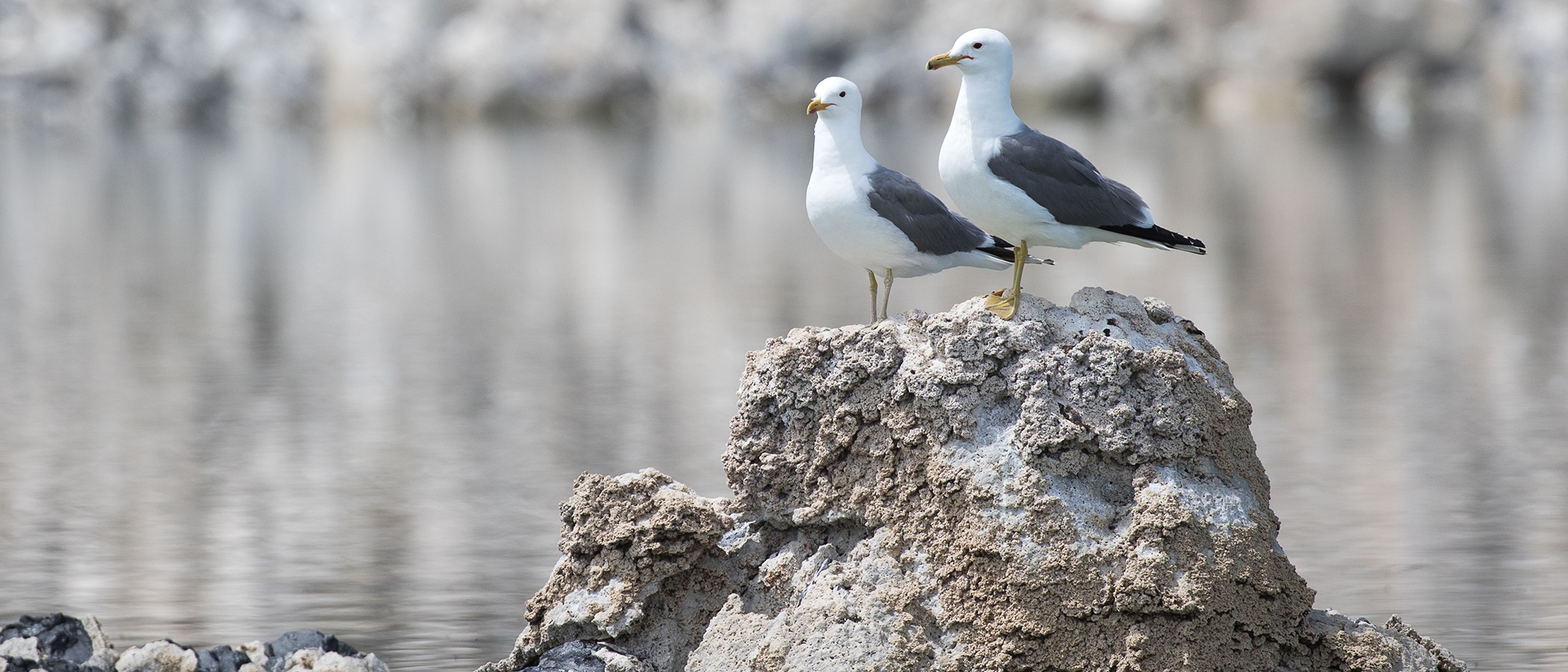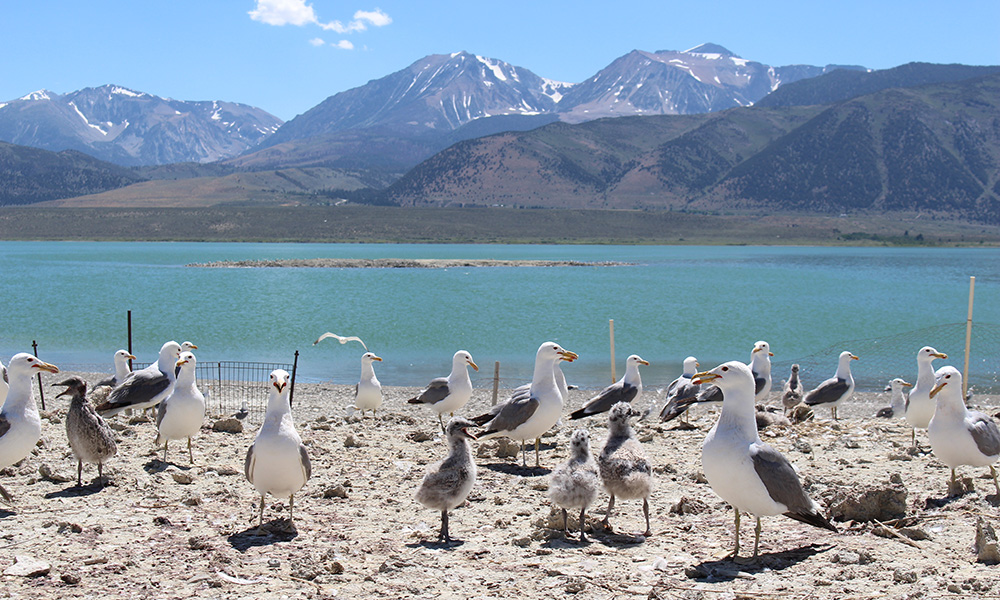
Those who have been watching Mono Lake drop during the last five years of drought know that we here at the Mono Lake Committee have been preparing to protect nesting California Gulls from opportunistic coyotes with a temporary electric fence across the emerging landbridge.

And then this January happened! We got record amounts of snow and rain brought by atmospheric rivers—enough to see a visible rise in the level of Mono Lake. We started to hear the perceptive question: “Does this mean you don’t have to build the fence?”
We’re still going to build the fence. There are two main reasons…
Not enough water in the moat
The lake level threshold at which coyotes have been known to try to access nesting islands is around 6378 feet above sea level; last summer researchers saw signs that coyotes crossed to some islands at a lake level of 6378.3 feet. Even with Mono Lake’s recent rise to 6377.6 feet above sea level it is nearly a foot lower than last summer, so we’re still in the danger zone for coyotes reaching the islands.
Timing is everything
California Gulls arrive at Mono Lake and start building their nests and laying eggs in April. But winter snows don’t melt enough to significantly raise Mono Lake’s level until around June. So even if more storms continue to cross the Sierra Nevada and dump much-needed snow in the Mono Basin watershed, the lake won’t benefit from that meltwater until summer, long after the gulls need protection for the nesting season.
It has been a great, snowy January, but the February 1 snow surveys that will take place soon will tell us just how great this month was. With that data in hand we’ll know more about the outlook for Mono Lake’s summer rise, which may make the fence unnecessary for the 2018 gull nesting season—we hope so! That’s why it’s designed to be temporary.
So we are still building a fence just to be safe. While it’s disappointing that the natural remedy for this problem won’t take effect just yet, the fence project is an exciting example of agencies and non-profits working together to do what we can for one of Mono Lake’s iconic species. We will need your help to make sure the fence gets built… Stay tuned for updates here. Long live the gulls!
Top photo courtesy of Point Blue Conservation Science.

[…] Original article […]